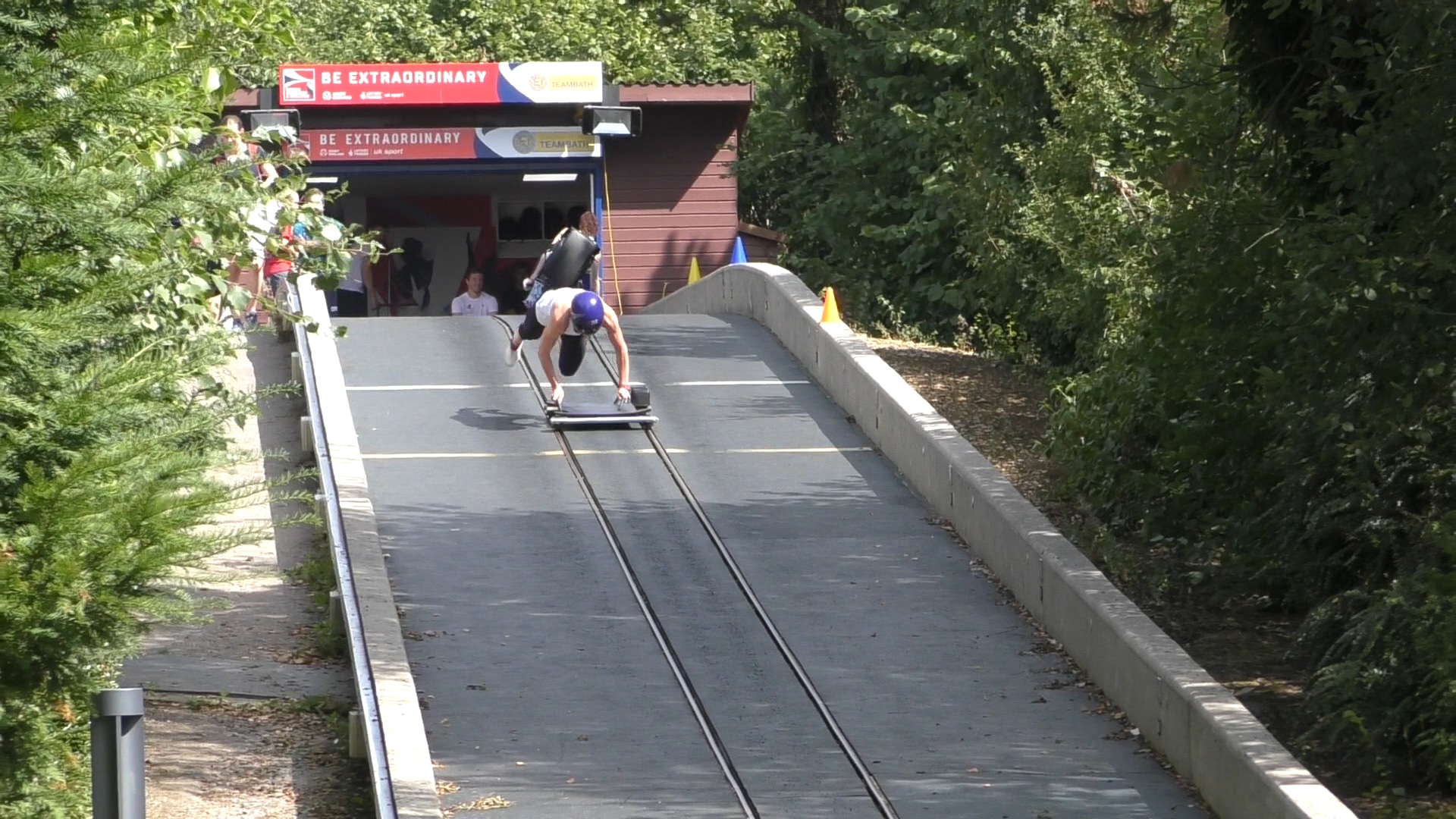By Kim Murray, Great Britain skeleton athlete, @KimMurray88
I decided to be a sports scientist aged 13. It only struck me quite recently that this was quite a young age to settle on a career. I’d been identified as a talented athlete in the South and was selected to attend a training camp where a workshop introduced me to the concept of sports science. The idea that you could work to help athletes be faster, stronger, fitter, that you could be a part of their team, really hooked me. At that point, my ‘team’ consisted of me and my coach; I didn’t know there could be more.
Although I didn’t yet know about the various areas of sports science, after that day I set out to learn more to make this career path happen. It was during my placement year at the University of Bath that I chose to specialise in physiology. I loved the physicality of exercise testing: seeing athletes push themselves to incredible physiological limits. I am generally fascinated by the human body and liked the tangible nature of physiology compared to psychology for instance.
I craved the high-performance end of sport science. I, myself was competing at national and international competitions in the long jump and felt the most affinity with helping athletes at the top of their game, trying to find an extra couple of percent.
Helping athletes achieve their best
Six months after I graduated from my Masters at Loughborough University, I started working as a junior exercise physiologist at the sportscotland institute of sport. For the first time, I was part of a team of experts working to improve performance. I enjoyed the collaboration, learning from my colleagues and trying to answer the questions asked to make a performance impact. The work was very varied and I got to experience a lot of sports, national governing bodies, coaches and athletes. After a year or so I applied for an exercise physiologist role and graduated from my junior position, allowing me to lead physiology support in several sports. Highlights included being on camp with Scottish Rowing and working in the prep camp and village for the Glasgow Commonwealth Games. I felt like I could deliver the biggest impact when working in an integrated way as part of a performance team.

Every day was different. I utilised many aspects of exercise physiology to best support the coaches and athletes I was involved with. With athletics, there was a lot of work with the endurance group around altitude and exercise testing. The rowers who were students needed more education on hydration and recovery strategies as well as training monitoring in a camp environment. There were several female athlete projects focussed on athlete health and wellbeing. I ran an extensive project collecting GPS and heart rate data on the netball team to gather up-to-date information on match intensities and demands, and to inform training. The team also filled in wellness and training dairies which I monitored, intervening when appropriate to flag fatigue. All the data I collected was relayed to the multidisciplinary teams within each sport, the coaches and the athletes as appropriate to solve performance questions and positively impact the performance of the athletes or team.
Following the Olympic dream
I had my dream job, but I wasn’t entirely content. Seeing and working with, sometimes even being a part of the success of the athletes and teams brought with it a desire to play the athlete again. There is a buzz you get as a member of the support team but I wanted to know that buzz having delivered the performance myself. In 2014 I trialled for #powertopodium, a UK Sport and British Skeleton talent identification search for ‘the next Lizzy Yarnold, Olympic skeleton champion’. Lured in by the possibility of realising that Olympic dream, I thought it would be a good opportunity, although I didn’t have high hopes!

After six months of physical testing, competing against 1000 other skeleton wannabes, I got selected for the fourth and final phase and went out on ice for the first time. This was the start of my transition to the ‘other side’. I now work with my own support team, and I’m currently training for the Beijing Olympics in 2022. Becoming the athlete has brought its share of challenges and a new mindset, but the physiologist in me remains curious about the behind the scenes.
Read Next Instalment
Creating Champions: Road to the Olympics
https://www.physoc.org/blog/creating-champions-road-to-the-olympics/
